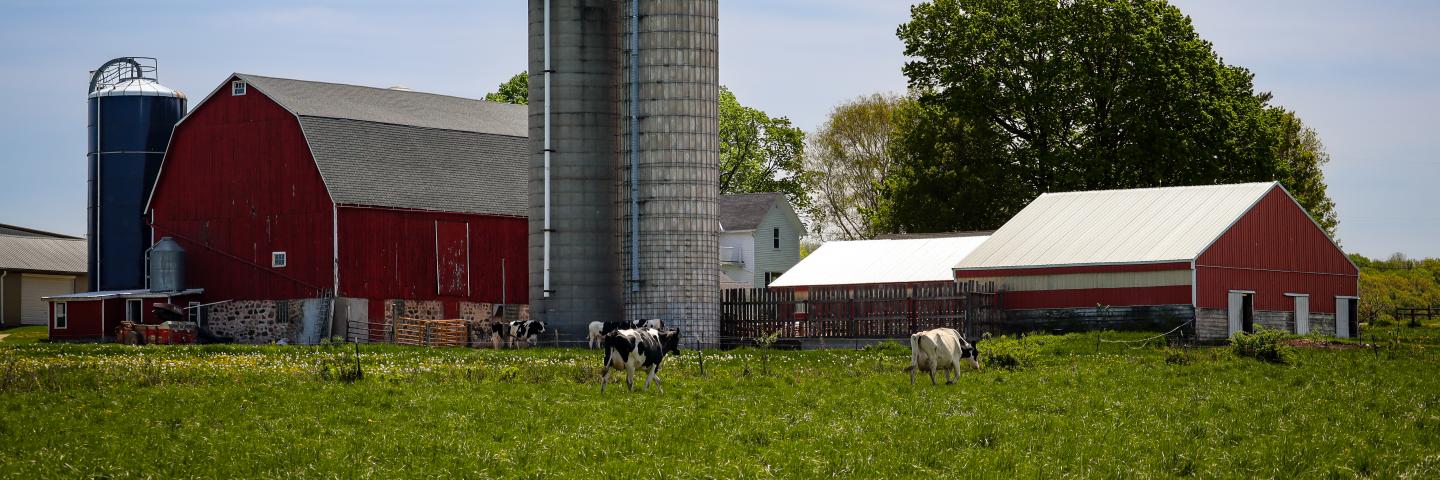Wisconsin NRCS Announces First Batching Period for Agricultural Easement Applications

IRA funding will provide an additional $189 million nationwide to the NRCS Agricultural Conservation Easement Program (ACEP).
MADISON, Wis., October 13, 2023 – The U.S. Department of Agriculture (USDA) encourages landowners interested in restoring and protecting critical wetlands, agricultural lands and grasslands to consider enrolling their property into conservation easements. Historically, the 2018 Farm Bill has provided USDA’s Natural Resources Conservation Service (NRCS) with technical and financial assistance to help private landowners, tribes, land trusts and other groups protect these valuable lands. The Inflation Reduction Act (IRA)—signed in August 2022 by President Biden and implemented in 2023—provides an additional $19.5 billion over five years to support USDA’s conservation programs that yield climate change mitigation benefits. The IRA represents the single largest investment in climate and clean energy solutions in American history, allowing more landowners access to conservation assistance. For the next fiscal year that began October 1, 2023, IRA funding will provide an additional $189 million nationwide to the NRCS Agricultural Conservation Easement Program (ACEP), which compensates landowners for voluntarily enrolling their land, focusing on restoration and protection of wetlands as well as conserving productive agricultural lands and grasslands.
Wetland Reserve Easements
Through ACEP Wetland Reserve Easements (WRE), NRCS helps landowners and tribes restore and protect wetland ecosystems. Wetlands are one of nature’s most productive ecosystems providing many ecological, societal, and economic benefits. WREs are either permanent or for 30 years in length. Eligible lands include farmed or drained wetlands that can successfully be restored, croplands or grasslands that have been altered by flooding, and riparian areas that link protected wetland areas. As part of the easement, NRCS and the landowner work together to develop a plan for the restoration and maintenance of the wetland. Before applying, the applicant should make themselves familiar with the terms of the easement and process required before an easement is in place. Applicants are encouraged to read the recently developed guide, Wetland Reserve Easements (WRE) through the Agricultural Conservation Easement Program (ACEP) - What to Expect, to learn more.
NRCS is expanding the national priority areas eligible for IRA funding through ACEP-Wetland Reserve Easements fiscal year 2024. NRCS priority focus areas include:
- Land with soils high in organic carbon.
- Eligible lands that will be restored to and managed as forests like bottomland hardwood forests.
- Eligible lands in existing forest cover that will be managed as forests.
- Several geographically specific priorities (i.e., former cranberry bogs, wet meadows, and ephemeral wetlands in grassland ecosystems).
Agricultural Land Easements
Through ACEP Agricultural Land Easements (ALE), NRCS provides funds to conservation partners to purchase conservation easements on private working lands. This program helps keep working lands in production, especially in areas experiencing development pressure. Landowners continue to own their property but voluntarily enter into a legal agreement with a cooperating entity to purchase an easement. All ALE easements are permanent. Eligible lands include privately owned cropland, rangeland, grassland, pasture and forests. The cooperating entity applies for matching funds from NRCS for the purchase of an easement from the landowner, permanently protecting its agricultural use and conservation values. Landowners do not apply directly to NRCS for funding under this program, but work through and with the cooperating partner, such as state or local agencies, non-profit entities or tribes.
NRCS is expanding the national priority areas eligible for ACEP Agricultural Land Easements through IRA funding in fiscal year 2024. NRCS priority focus areas include:
- Grasslands in areas of highest risk for conversion to non-grassland uses to prevent the release of soil carbon stores.
- Agricultural lands under threat of conversion to non-agricultural uses.
- State-specific priorities including rice cultivation on subsiding highly organic soils.
NRCS Wisconsin will also benefit from ACEP funds made available by the Great Lakes Restoration Initiative (GLRI) through an interagency agreement with the Environmental Protection Agency.
“Due to the increase of funding made available this year through the GLRI and IRA, our agency has the potential to fund a quantity of easements unparalleled in recent years,” said Dave Gundlach, Assistant State Conservationist for Easements.
More Information
Applications for the Agricultural Conservation Easement Program WRE and ALE are taken on a continuous basis and are ranked and considered for funding once a year. The deadline to submit applications for fiscal year 2024 is November 13, 2023.
“There are several steps landowners and eligible entities can take in preparation of their application. I encourage them to visit our website for more information,” adds Gundlach.
Landowners and tribes interested in Wetland Reserve Easements should contact their local USDA service center to get started. Partners interested in Agricultural Land Easements should contact the NRCS Wisconsin State Office to get started.
#
USDA is an equal opportunity provider, employer and lender.

